Noise isolation of sewer pipes
Thanks to the development of production technologies, new materials are being introduced from time to time into construction. As a rule, innovations entail a significant optimization of both the working conditions and the economic component of the work process. However, it also happens that the use of the material leads to unexpected problems. This is exactly what happened when plastic came to replace cast iron in the production of sewage pipes. A side effect was a significant increase in system noise. Therefore, insulation of sewer pipes is quite relevant for many homeowners.
Description of the problem
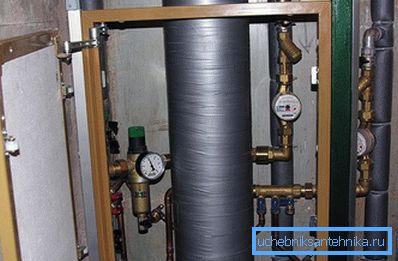
Before proceeding to the description of the necessary measures that are necessary for sound insulation of pipes, it is worth deciding on what the essence of the problem is. So, right away it is important to note that there may be two reasons leading to the occurrence of sound interference from the sewage system:
- The material of manufacture. As mentioned above, the use of thin-walled plastic pipes has led to a decrease in sound insulation of the sewage system. Sound waves with virtually no interference (and often resonating in the pipe) pass into the room, which makes being inside it unpleasant.
- Design errors. Examples include bad fixing of pipes, incorrect angles of inclination when laying communications, or errors leading to the ingress of air into the pipes, which also entails an increase in noise.
In some cases, there is a combination of the above reasons. Based on the cause of the problem, you should choose the appropriate solution.
Design
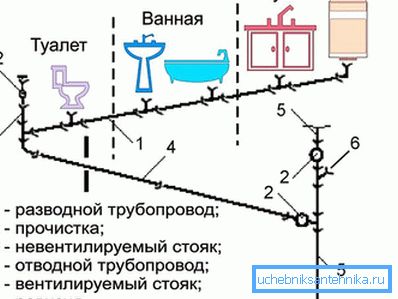
One of the solutions to the problem of increased noise level of sewage pipes is the correct design of the entire system. To a greater extent, this concerns the sewage of multi-storey buildings, but for a private home ownership the problem may be relevant and should also be considered.
The essence of the work boils down to the fact that the main elements of the system must be taken out of the room. For example, pipes can be installed in the basement, which will significantly reduce the noise by itself. In addition, during the construction phase, it is possible to trace compliance with the rules for the installation of sewage pipes.
Horizontal elements of the system should be installed with a slight slope (10–20 mm per meter running pipe) in the direction of the riser. As a result, natural deposits will be removed from the inner walls of the pipes, which will have a positive effect on the overall efficiency of the system. However, it is undesirable to exceed permissible inclination limits.
Troubleshooting installation errors
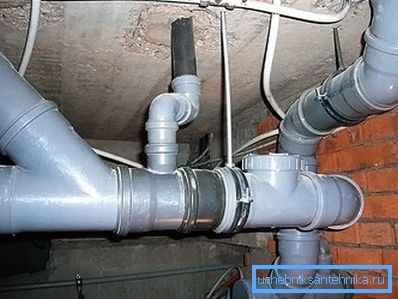
Sound insulation of sewage pipes in an apartment with the help of the above measures is unlikely and the owners have to deal with the results of the work of plumbers, and they are often unsatisfactory. So, often there is an increased noise of the riser, which occurs as a result of insufficient fixation. As a result, the use of sewage will cause vibration loads that will lead to noise. The issue can be resolved by pulling all the mounting points of the riser. If necessary, the central sewer pipe can be equipped with additional fixing clamps.
Pipe replacement
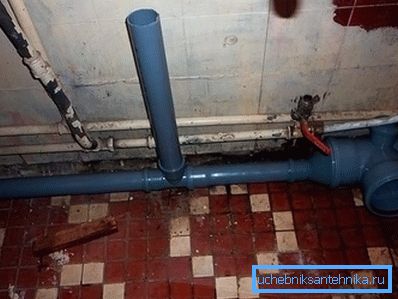
Another option to reduce the noise that occurs in sewer pipes is their partial or complete replacement. Here we are talking about the fact that thin-walled plastic has many positive characteristics, but it tends to resonate noise.
The so-called silent tubes can be used as a material replacement. They differ from ordinary sewage elements in the multi-layered structure, which has a positive effect on the level of noise insulation. If there is such an opportunity, the installation of such pipes will be the most effective solution to the problem.
Installation of noise insulation
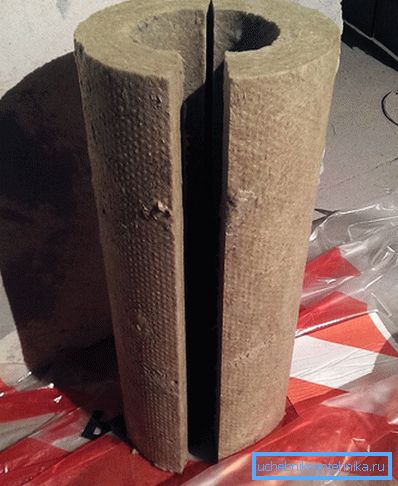
If you need sound insulation of sewage pipes in the apartment without replacing them, you will have to carry out work on their additional noise insulation. The following materials and tools will do for this:
- Foam shells used for thermal insulation. This material is divided along foam pipes, equipped with locking joints. Their main purpose is heat insulation, but their use will also noticeably reduce noise. The shell can be fixed around the pipe using clamps as well as glue.
- Heat insulation film. For the purposes of sound insulation can be used almost any heat-insulating film such as polyethylene foam.
- Special materials. In order to ensure noise reduction in pipes, it is logical to use special materials. In general, they are similar to heat insulating, but are more efficient.
- Installation box. Since the use of external sound insulation will adversely affect the appearance of the pipes, a special box mounted around the pipes can act as a decorative element covering the pipes. The material of its manufacture can be used moisture resistant drywall. The space inside the box can optionally be filled, for example, with mineral wool or another insulator. This approach will allow not only to hide the defects in the appearance of the pipes, but also almost completely exclude the possibility of noise penetration into the room.
Sound insulation using mineral wool without a box in a residential area is impossible. Non-insulated mineral wool damages health, namely, the respiratory system.
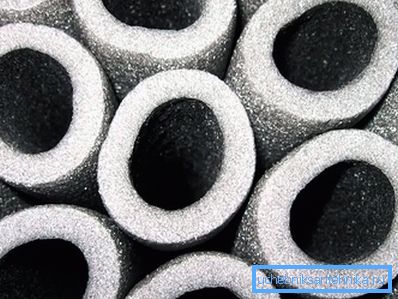
Among other things, it is important to note that in terms of work efficiency, not only the choice of a suitable material is important, but also compliance with the technological features of the work:
- All pipe clamps should be equipped with special rubber gaskets.
- Gaskets should be equipped and the contact points of the pipes with floor slabs.
- The material used as a sound insulator should be wound on the pipe as tightly as possible and in several layers.
- Only materials specially designed for this purpose should be used in works. For example, there is a common mistake when trying to use mineral wool as a sound insulator. The material can only be used as an additional measure, as a filler of a decorative box, and the sound insulation wool itself will not do well in itself.
As can be seen from the above material, there are quite a few options for what to do if the pipe is noisy. Deciding on the appropriateness of a particular option is necessary based on the specific situation.
Video
This video provides one of the options for effective sound insulation: